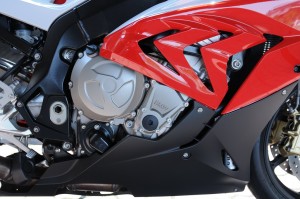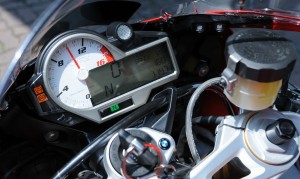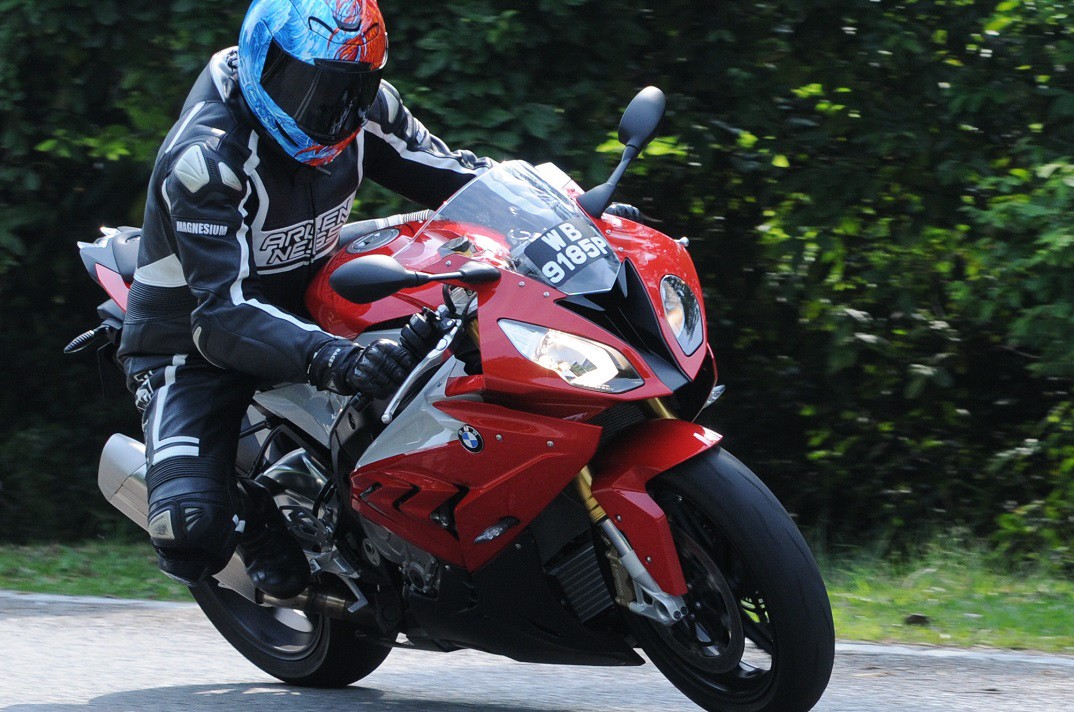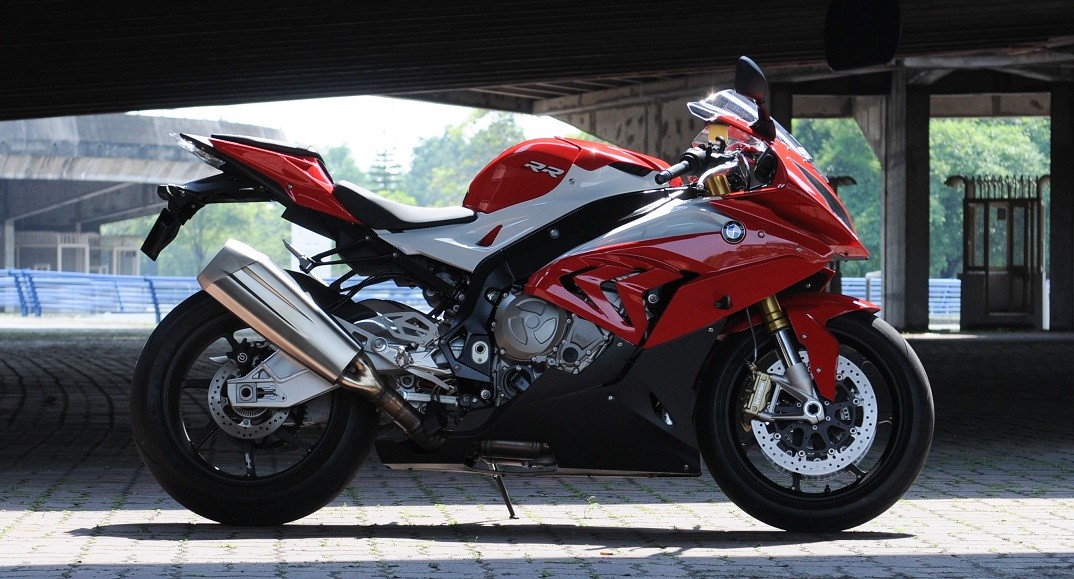BMW’s Motorrad division has been on an insanely long winning streak, punctuated by its growth in sales. Never mind the incremental global yearly numbers, when you’ve sold as many bikes in Malaysia in the first seven months of 2015 as you did the whole of 2014 you’re clearly doing lots of things right.
Thus far four new BMW bikes have hit our shores this year, and in case you forgot they’re the R1200R (recently reviewed by Daniel Yap), R1200RS, S1000XR and this bike, the Mk2 version of the S1000RR. Seven years after the original debuted in Munich how much better is the new bike compared to the original?
What you see isn’t always what you get
To the casual observer, it would seem the men at Motorrad have been sitting on their arses. Sure, there have been incremental changes lavished on to BMW’s super sport machine over the years but one would have hoped an all-new model would warrant some all-new looks.
To be fair, I don’t think a single panel fairing was left untouched but there is more than a hint of familiarity to the looks. The asymmetrical styling concept remains and you still get BMW’s odd “one eye big, one eye small” headlights and mismatched fairing vents, so there can be no doubting the identity of the S1000RR when you see it in the flesh. New to proceedings are the double exhaust outlets in a single silencer, but most owners will probably slap on an Akrapovic pipe before they even ride it out of the showroom.
This is a BMW though, so there are lots of changes underneath the plastic panels. Let’s start with the engine.
 There are all-new cylinder heads with new intake camshafts and lighter intake valves. The cams on the intake shaft now have a fuller contour and each intake valve is two grams lighter while the valve springs have been adapted accordingly. In case you’re wondering, two grams is roughly the weight of a nose hair!
There are all-new cylinder heads with new intake camshafts and lighter intake valves. The cams on the intake shaft now have a fuller contour and each intake valve is two grams lighter while the valve springs have been adapted accordingly. In case you’re wondering, two grams is roughly the weight of a nose hair!
To reduce friction, the cylinder barrels are integrated into the top half of the engine block and now undergo something called slide honing with the lightweight six-speed gearbox placed atop the block to offer sharper shift precision.
Since 200hp seems to be the new “baseline” for super sport bikes BMW claims the S1000RR has 199hp at 13500rpm, which represents an increase of 6hp over the old bike. Torque has also gone up by 1Nm to 113Nm at 10500rpm, which is matched to a much wider useable power band.
 Complementing the improved motor is a new chassis. The frame is lighter with a blend of rigidity and flexibility to theoretically offer greater traction, precision and feedback. The actual chassis consists of four individual aluminium cast pieces welded together with the engine tilted forward at a 32-degree angle and integrated as a load-bearing element.
Complementing the improved motor is a new chassis. The frame is lighter with a blend of rigidity and flexibility to theoretically offer greater traction, precision and feedback. The actual chassis consists of four individual aluminium cast pieces welded together with the engine tilted forward at a 32-degree angle and integrated as a load-bearing element.
At the back, the swingarm pivot point was also lowered by 3mm and the wheelbase lengthened by 15mm to increase agility without affecting stability through corners. BMW claims the new chassis geometry provides increased rider feedback especially when pushing the RR to its limits. In normal bloke speak, that translates to a smaller likelihood of either laying down skid marks in your shorts or eating tarmac when ambition overcomes ability.
Electronic safety nets…there to make you look good
Aside from the new engine and chassis BMW Motorrad has stuffed the S1000RR with more computing power than C3PO. It had to because in 2015, any open-class sport bike needs a comprehensive electronics suite to be competitive. Electronic dynamic traction control, dynamic suspension damping, configurable ABS and multiple engine modes are just some of the goodies, and like any good piece of kit they play a major role in how the bike is ridden.
First up, the riding modes. The old S1000RR already had “Rain”, “Sport” and “Race” but the new one gets two additional modes, “Slick” and “User” when the bike is equipped with Ride Modes Pro. “Slick” for track use only but “User” allows for individual configuring depending on how a rider likes their power delivery and how much traction control and ABS intervention they want. Ride Modes Pro also comes with a pit-lane speed limiter for track days.
Tied in with the engine modes is Dynamic Damping Control (DDC). The DDC system processes inputs from multiple sensors and adjust the suspension damping accordingly to react to any given situation. This happens every 10 milliseconds, with DDC using information such as traction, cornering angle and damper feedback in its decision-making algorithm. Suspension preload is still adjusted manually with the aid of a spanner, which may seem a bit Flintstones but it’s a simple and reliable mechanism.
 ABS brakes are of course standard but the S1000RR augments the regular system with Race ABS, which is configurable. Therefore a rider can select how much front end lock-up they want before it kicks in and the system is also smart enough to reduce or even prevent rear wheel lift. Race ABS also works hand-in-hand with the Dynamic Traction Control (DTC) system. Using preset levels for each engine mode, DTC can fine tuned in 7 +/- steps, meaning one can start a track day riding like a newbie and end it looking like Marquez power sliding through a curve.
ABS brakes are of course standard but the S1000RR augments the regular system with Race ABS, which is configurable. Therefore a rider can select how much front end lock-up they want before it kicks in and the system is also smart enough to reduce or even prevent rear wheel lift. Race ABS also works hand-in-hand with the Dynamic Traction Control (DTC) system. Using preset levels for each engine mode, DTC can fine tuned in 7 +/- steps, meaning one can start a track day riding like a newbie and end it looking like Marquez power sliding through a curve.
 Owners will also be able to shift gears as fast as the mercurial Spaniard thanks to BMW’s Gear Shift Assist Pro. Essentially it allows for clutchless up and down shifts with rev matching when going down the gearbox. Slowing down for turn one at Sepang, all a rider needs to do is concentrate on braking and turn in points while dropping four gears sans clutch and throttle blips. In practice, a minimum number of revs are needed for it to work smoothly but after a while it becomes second nature.
Owners will also be able to shift gears as fast as the mercurial Spaniard thanks to BMW’s Gear Shift Assist Pro. Essentially it allows for clutchless up and down shifts with rev matching when going down the gearbox. Slowing down for turn one at Sepang, all a rider needs to do is concentrate on braking and turn in points while dropping four gears sans clutch and throttle blips. In practice, a minimum number of revs are needed for it to work smoothly but after a while it becomes second nature.
Want to know the best part about these new electronics? While most markets, offer them as part of the optional Race and Dynamic Packages, Malaysian bikes come with the Premium Package (incorporating both Race and Dynamic packages) as standard. So aside from the tech I’ve mentioned, we also get such niceties like cruise control and heated grips, which is apparently something owners really appreciate.
For the adrenalin junkie
I’m a taller than average and heavier than average 41 year-old man. Usually, my dimensions are not a hindrance to riding motorcycles but every time I get on an open class sport bike, I spend the first 15 minutes wondering why the manufacturer would ask me to control 200hp with my ass up high and my torso placed flat on a tank containing 18-litres of fuel. Try watching TV on your couch in that position and you’ll need a chiropractor by the end of an episode of Masterchef.
If however you’re of a slim and flexible persuasion, the S1000RR will feel almost luxurious. The wide tank allows for excellent location of legs and knees and though there is a lot pressure on wrists and shoulders, the riding position is actually a lot more comfortable than say an Aprilia RSV4. Most owners will forget such foibles anyway the first time they twist the throttle.
The all-new S1000RR is now quicker off the mark with a strong mid range and addictive top end rush. Even in Rain mode, it feels quick with 187hp available to the rider. However, the electronic leashes are set to full intervention mode so only use it when there’s, you know, actual rain in the air.
Sport is where most will get started and is more than enough for regular road use but if you want the full-on neck-snapping experience, Race mode is the way to go. The bike delivers the full 199hp experience, with sharp throttle response and some level of slip to test your skills but it won’t leave a rider hanging when talent runs out. On a public road, it feels supremely fast but somehow not with the knife edged fear of a Kawasaki Ninja H2 at full tilt.
 You do expect this bike to accelerate like a rocket, but a big surprise was the ride comfort. DDC proved its capabilities on the old BMW H4 and the system works just as well on the new S1000RR. Bumps can still be felt but the pliant damping has smoothed their hard edges. In extremis, some have said the front end lacks a bit of ultimate feel due to the electronics, but I think 99 per cent of owners will never get to such levels.
You do expect this bike to accelerate like a rocket, but a big surprise was the ride comfort. DDC proved its capabilities on the old BMW H4 and the system works just as well on the new S1000RR. Bumps can still be felt but the pliant damping has smoothed their hard edges. In extremis, some have said the front end lacks a bit of ultimate feel due to the electronics, but I think 99 per cent of owners will never get to such levels.
There’s less conjecture about Gear Shift Assist Pro, which works very well. Banging out upshifts with the precision of a rifle bolt it’s even more impressive on downshifts as engine revs and road speed are matched to perfection. It almost feels like accessing some sort of cheat mode and though it feels odd at first and there’s a lack of positive feedback on downshifts, this bit of kit alone will shave seconds off your lap time.
As for the brakes, I can only confirm they work well during road riding and I have no doubt they’ll easily handle track days. Race ABS really is a boon for fast riders but it’s also nice to know BMW offers the option of letting the computers decide everything. Oh and if you’re thinking of doing a spot of touring on the S1000RR, just remember to keep an eye out for fuel stops every 200km or so.
More for less
So, is the all-new but very similar BMW S1000RR a winner? I think it is and just like the original, it advances the sport bike game. Fast, agile, high-tech and at RM108,900 (inclusive of GST) priced just right to tempt you without breaking the bank, it’s destined to be a firm favourite with Motorrad enthusiasts while winning over some new customers too. Now if you’ll kindly excuse me, I think I’m late for my chiropractor appointment.
BMW S1000RR
Price: RM108,900.00 (incl/ GST, w/o insurance)
Engine: 999cc, liquid-cooled, 16V, inline-4
Output: 199hp @ 13,500rpm; 113Nm @ 10,500rpm
Frame: Aluminium twin-spar
Suspension: 46mm USD forks, adjustable (FF), Monoshock, adjustable (RR)
Brakes: 4-piston calliper, 320mm discs (FF), Single-piston calliper, 220mm disc, ABS
Wheelbase: 1,438mm
Fuel tank: 17.5 litres




